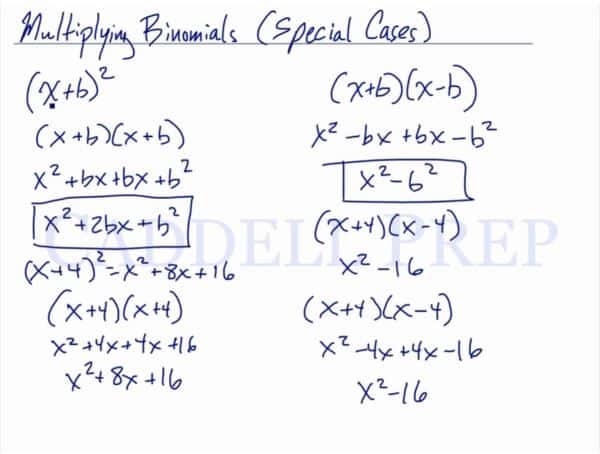In this video, we are going to look at how to multiply binomials with special cases. After you finish this lesson, view all of our Algebra 1 lessons and practice problems.
For example:
To multiply we have to multiply the binomial by itself. When we foil it, we get
After combining like terms, this simplifies to
By following this form, we can use this to solve any squared binomial.
For example:
can be solved by plugging in 4 for where we see b. This will give us a final answer of
Another special case example would be to multiply
When we foil it we get
After combining like terms, it simplifies to
By following this form, we can use this to solve other binomials written this way.
For example:
would be easily solvable by plugging in 4 for where we see b. This will give us a final answer of
Example of Multiplying Binomials (Special Cases)
Example 1
We will follow the form to solve.
Now, we have:
Example 2
We will follow the form to solve.
Now, we have:
Video-Lesson Transcript
Let’s go over how to multiply binomials with special cases.
For example:
This is multiplying a binomial by itself.
So what happens is this
This means that you can immediately get the product of these two binomials if you follow this format.
For example:
I’ll do the math and check if that’s true.
Combine like terms
So, it’s supposed to come out like this.
Let’s have another special case.
So if we combine like terms, we’ll have
So if we have
If we multiply it, we’ll have the same thing
Just like what we got earlier.
So in these special cases, just follow the format that we have above.



